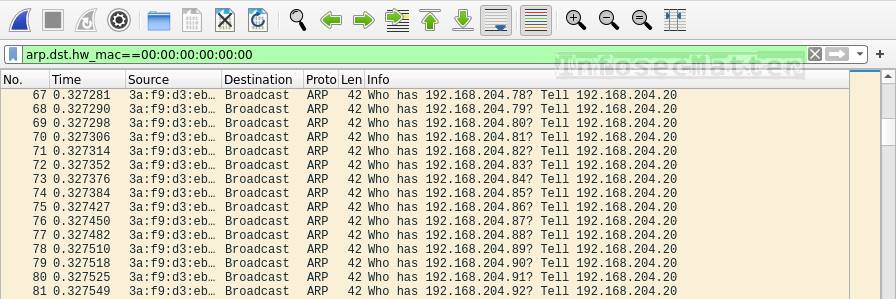

- #WIRESHARK FILTERS DEAUTHENTICATION ATTACKS HOW TO#
- #WIRESHARK FILTERS DEAUTHENTICATION ATTACKS MAC#
Wi-Fi deauthentication attack and Wi-Fi disassociation attack are two attacks in which an attacker spoofs the MAC address of a victim’s device and sends a deauthentication frame or disassociation frame to an access point.

Some endpoints are hard, CDNs, for example, are a nightmare.What are Wi-Fi Disassociation and Deauthentication attacks? The goal is to keep filtering out traffic as you learn what that traffic is. I am just using those for articulative purposes. Now, please note, your top talkers you want to filter will not be or. Now, move from the Conversations pane to the main Wireshark pane and put in the following: !ip.host contains "" & !ip.host contains "" We see that there are a lot of packets to and Google. The goal here is to sift out as much traffic as possible. Now, select the IPv4 tab and sort the data by Packets: Move the conversations screen to the side, and have the main Wireshark screen on another side. This is helpful for filtering out traffic that is not evil and trying to sift down to something “interesting.” Now, you can see the resolved host names: But look, resolve IP addresses is no longer grayed out! Now, select View > Name Resolution and select Resolve Network Addresses and Resolve Transport Addresses.Īnd you should see all of the different IP Conversations. Please close the Conversations window and go back to the main Wireshark window. Also, notice that the Name Resolution box is greyed out. Now, I would like you to look at the fact that all the IP addresses are just that, IP Addresses. In a bit we are going to start filtering these conversations out of the stream. Whenever I think there is a system that is compromised, I can pull this up and see which other systems the “suspect” system is communicating with. Please select “Statistics” then “Conversations”. We will cover other approaches over other posts.Īnother way to view the data is by “Conversations”. Now, please do not take this to mean this is the only way to approach a packet capture looking for malware. It is a way of breaking out signal to noise. When working through these captures it is helpful to start with the endpoints that have the most packets and work your way down. This will show all the endpoints in the capture. Let’s start by looking at some statistics and have Wireshark create a filter for us.

The ability to filter out and focus in on conversations in the TCP stream is what we tend to do when looking for evil on the wire. This is, without question, the most powerful part of Wireshark. You can see the filter box at the top of the screen. Now, let’s leave that be for a bit and play with some filters. When you select some hex in the third pane or a section in the second pane it will highlight the corresponding information in the other pane. After all, we are all not Chris Brenton, Bill Stearns, Mike Poor or Judy Novak. The third pane is the raw hex and ASCII decode of the packet and the second pane describes what that hex means. When you select a packet the second and third pane will change. Take a moment and click on any packet in your capture. The top pane is all of the individual packets it has the number of the packet, the time, the source, destination, protocol, length and other information. Then, you open a 2GB network capture in Wireshark, excited to be one of the “leet” few who use this powerful tool and you get this… One of the more powerful techniques for network hunting is sifting through a network capture.
#WIRESHARK FILTERS DEAUTHENTICATION ATTACKS HOW TO#
In this post, we will be looking at how to identify the connections with the most packets, how to enable DNS resolution in the captures, and how to create a series of basic filters to remove known “good” traffic from the packet capture. Specifically, we want to have a packet capture of the traffic from that system that is leaving your network going out to the Internet. And, let’s say you can get a packet capture from that system. Let’s say you have a system you believe to be compromised.


 0 kommentar(er)
0 kommentar(er)
